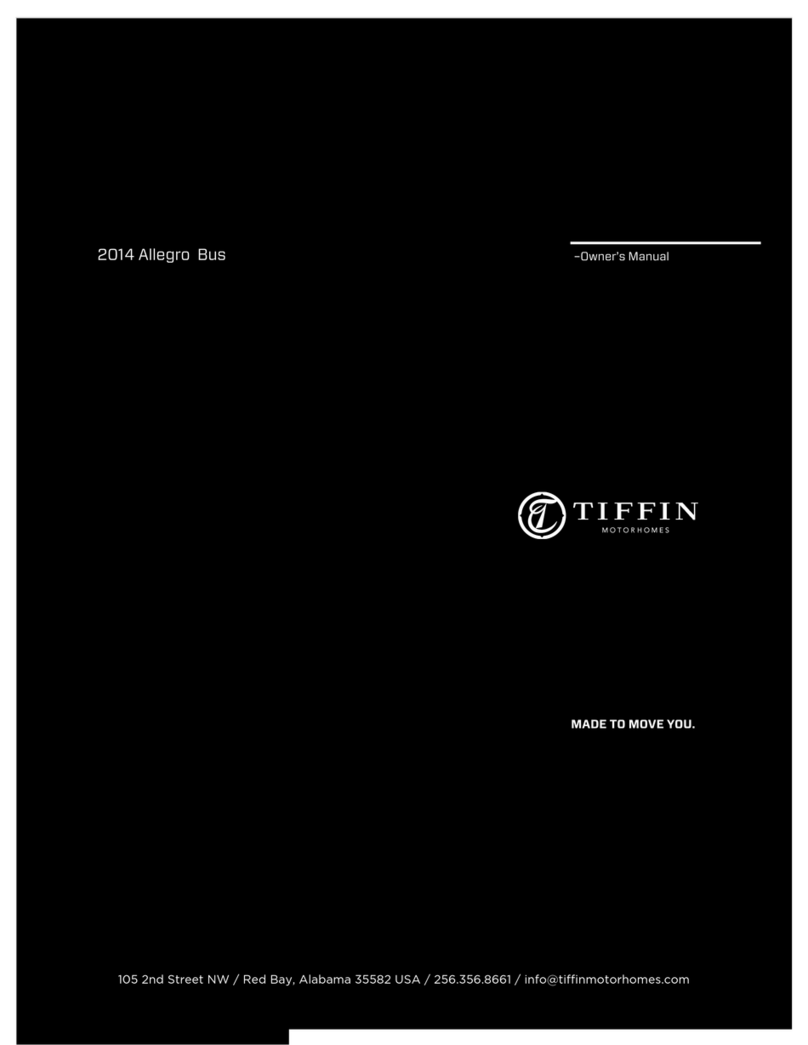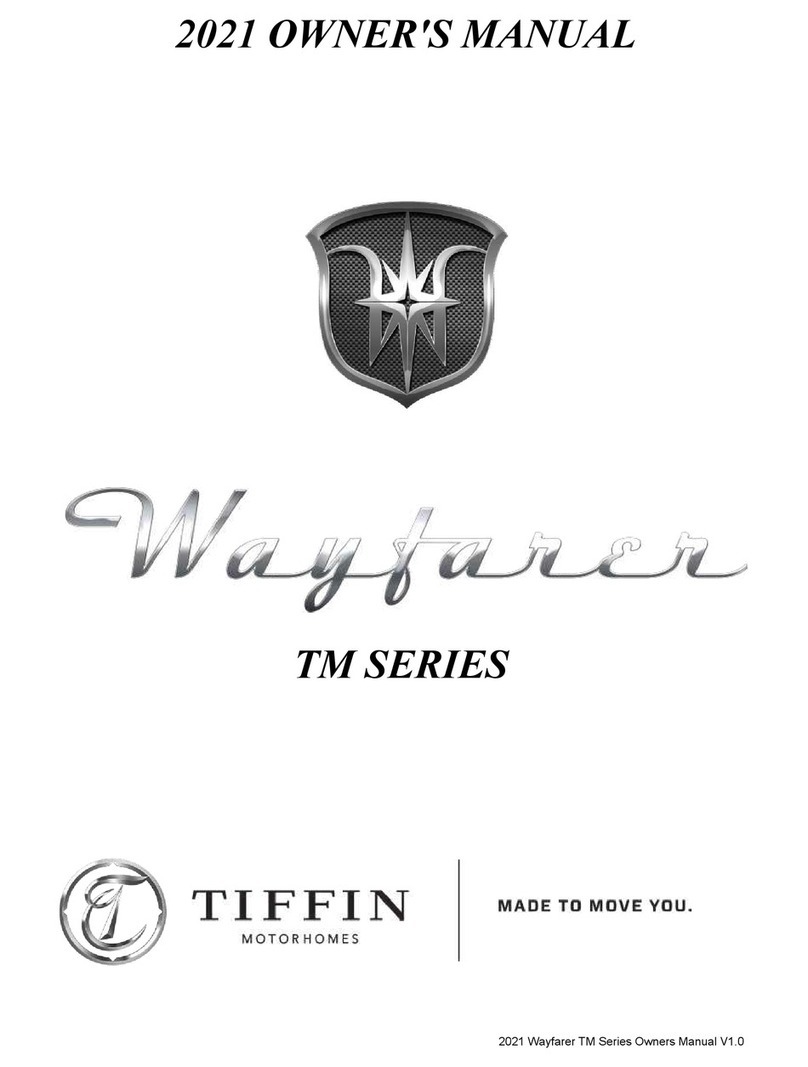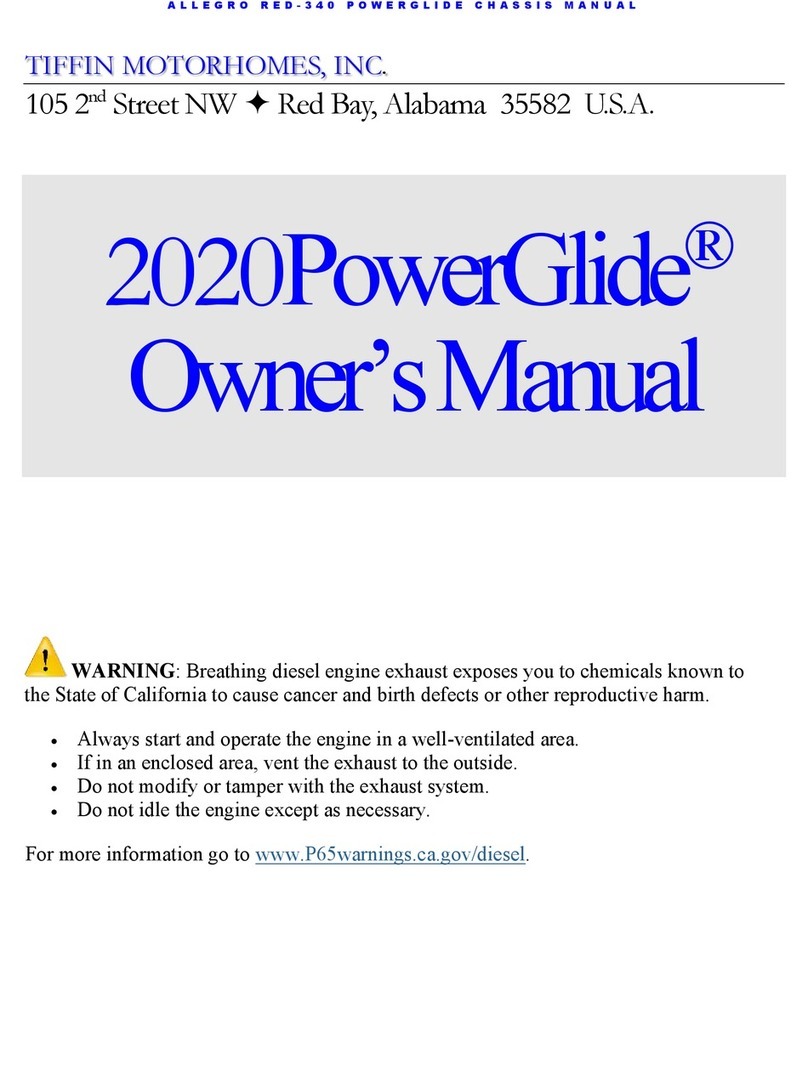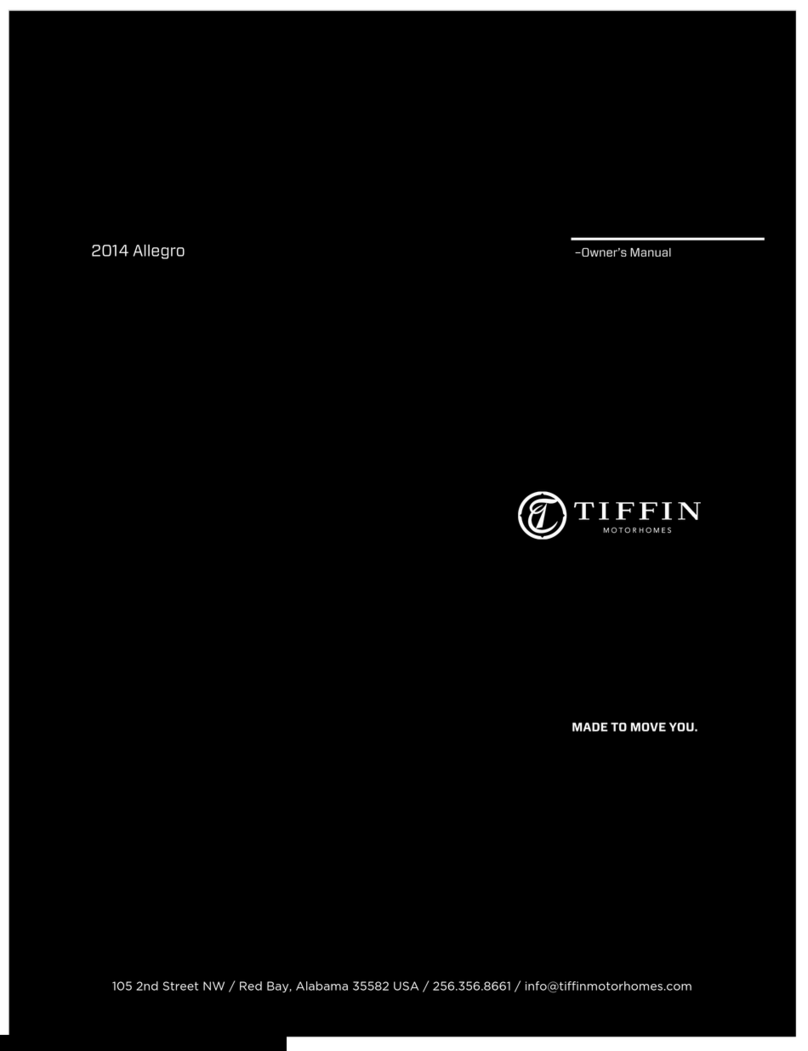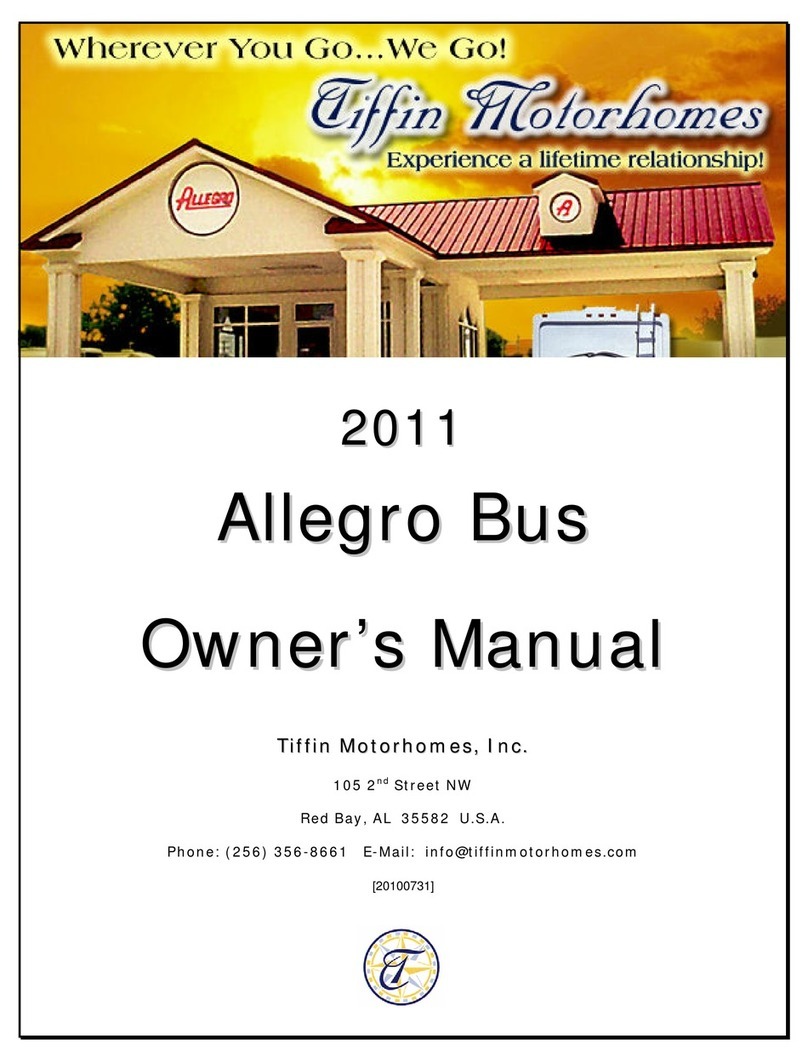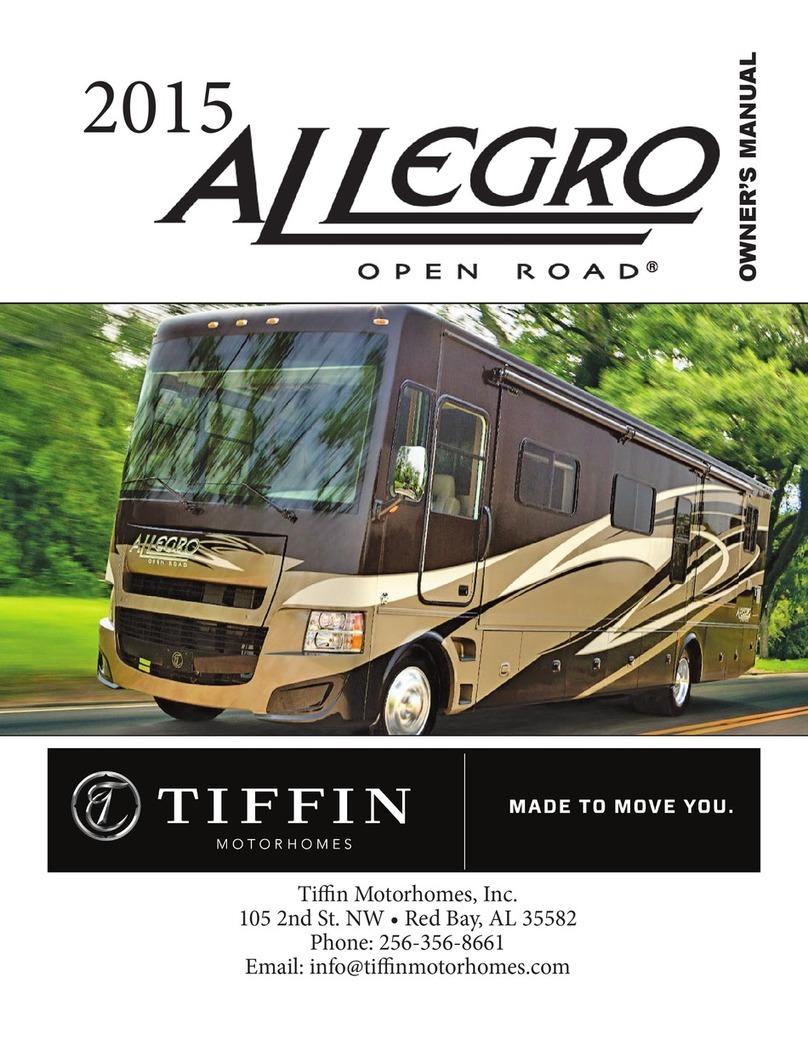
TIRE CARE
To determine the correct air pressure for your tires, load your motor home as you would normally travel,
including water and fuel. Go to a truck scale as found at most major truck stops and weigh each wheel
position independently, with driver and passenger(s) in the vehicle as described in the
Michelin Recreational
Vehicle Tire Guide
(MWL43146 Rev. 03/12) to determine the correct air pressure for the weight on each
wheel position. Then use the charts in the guide and adjust the pressure accordingly when the tires are cool or
have not been driven for more than one mile. You may call 1-800-847-3435 for a copy of the
Michelin
Recreational Vehicle Tire Guide
, or visit: https://www.michelintruck.com/reference-materials/manuals-
bulletins-and-warranties/load-and-inflation-tables/#/
NOTE: Never reduce the air pressure in a hot tire.
REMEMBER: For control of your RV, it is critical that the tire pressure be the same on both sides of the axle.
Emissions and Fuel Efficiency
Compliance
Your chassis was designed, and built, with components including, but not limited to, low rolling resistance tires
specifically designed and manufactured to exacting standards for regulatory fuel efficiency and greenhouse gas
emissions compliance. The vehicle owner is responsible for being sure these components are replaced with
the same or equivalent components that maintain compliance with federal and local regulations.
For help with determining tires that are the same or equal in regards to rolling resistance for maintaining
compliance with the regulatory standards, please contact Michelin at 1-800-947-3435.
